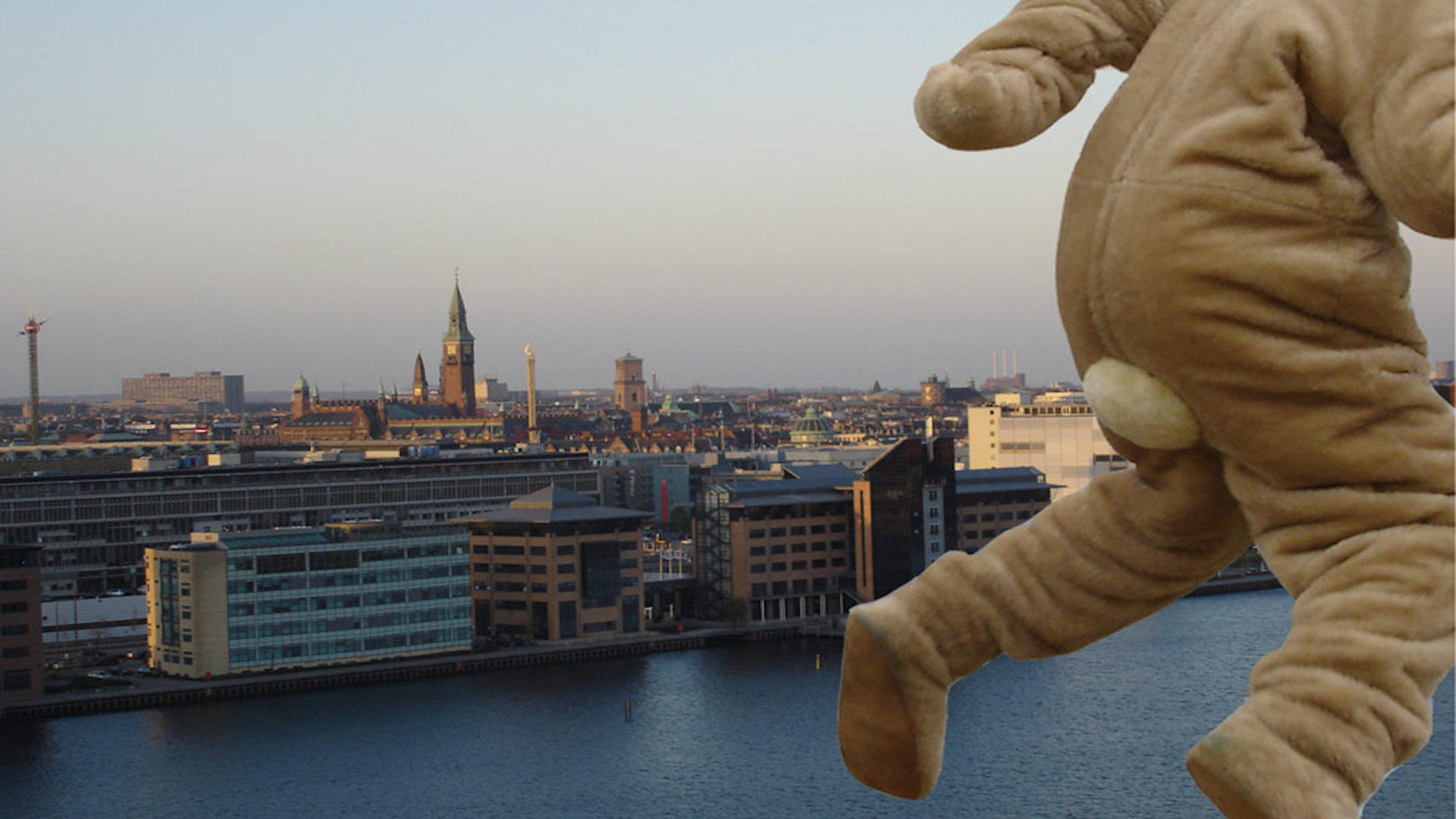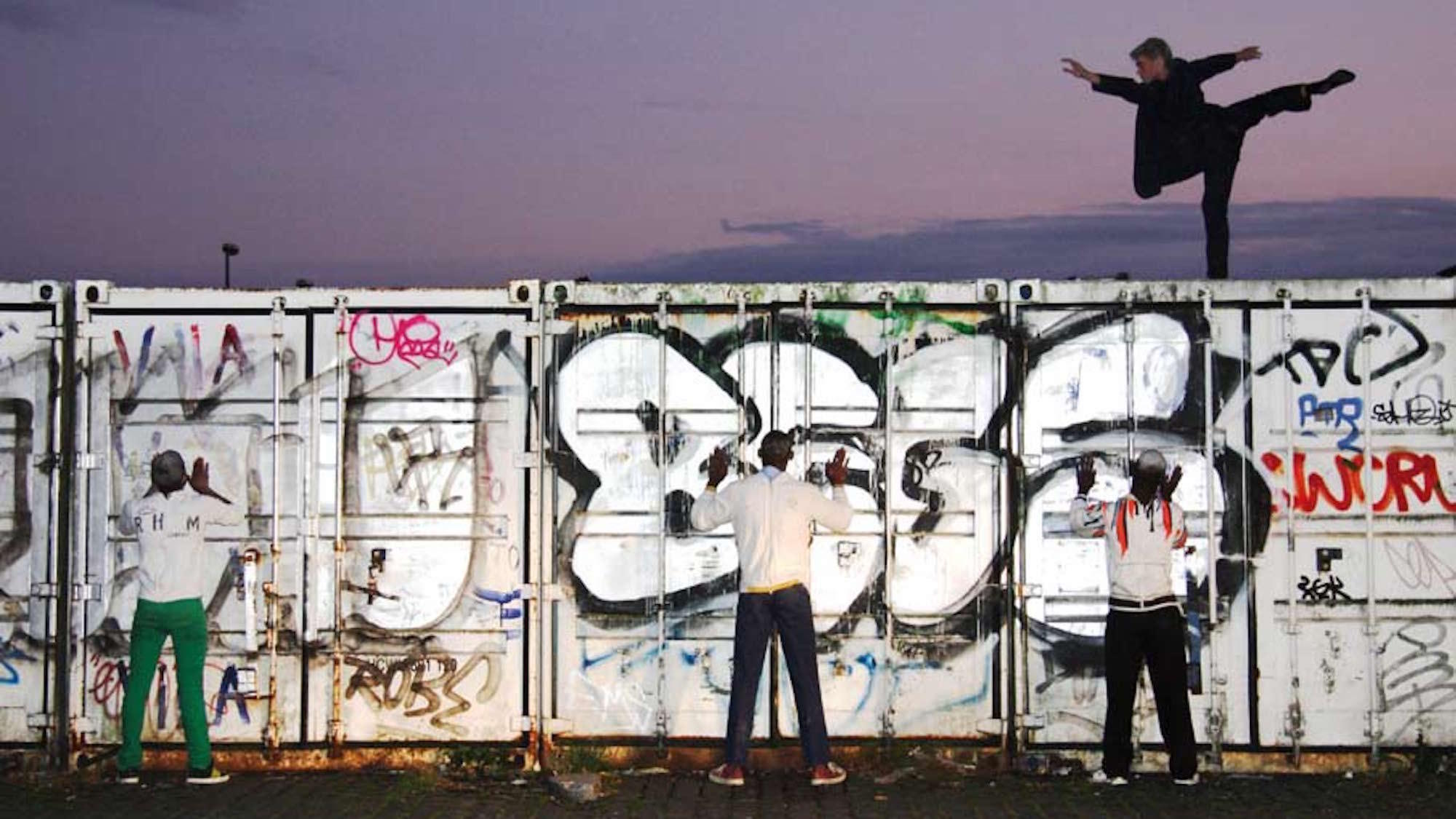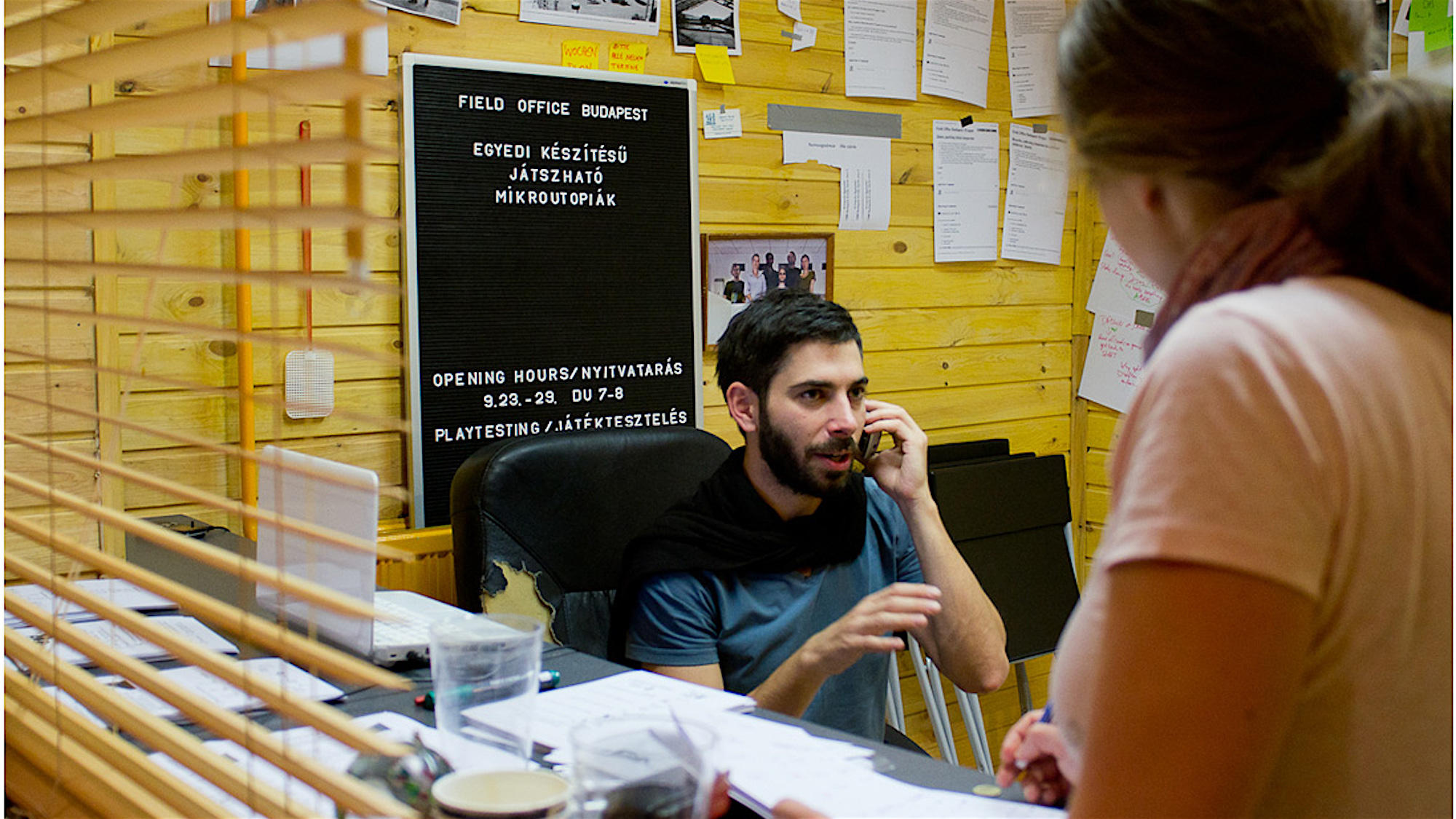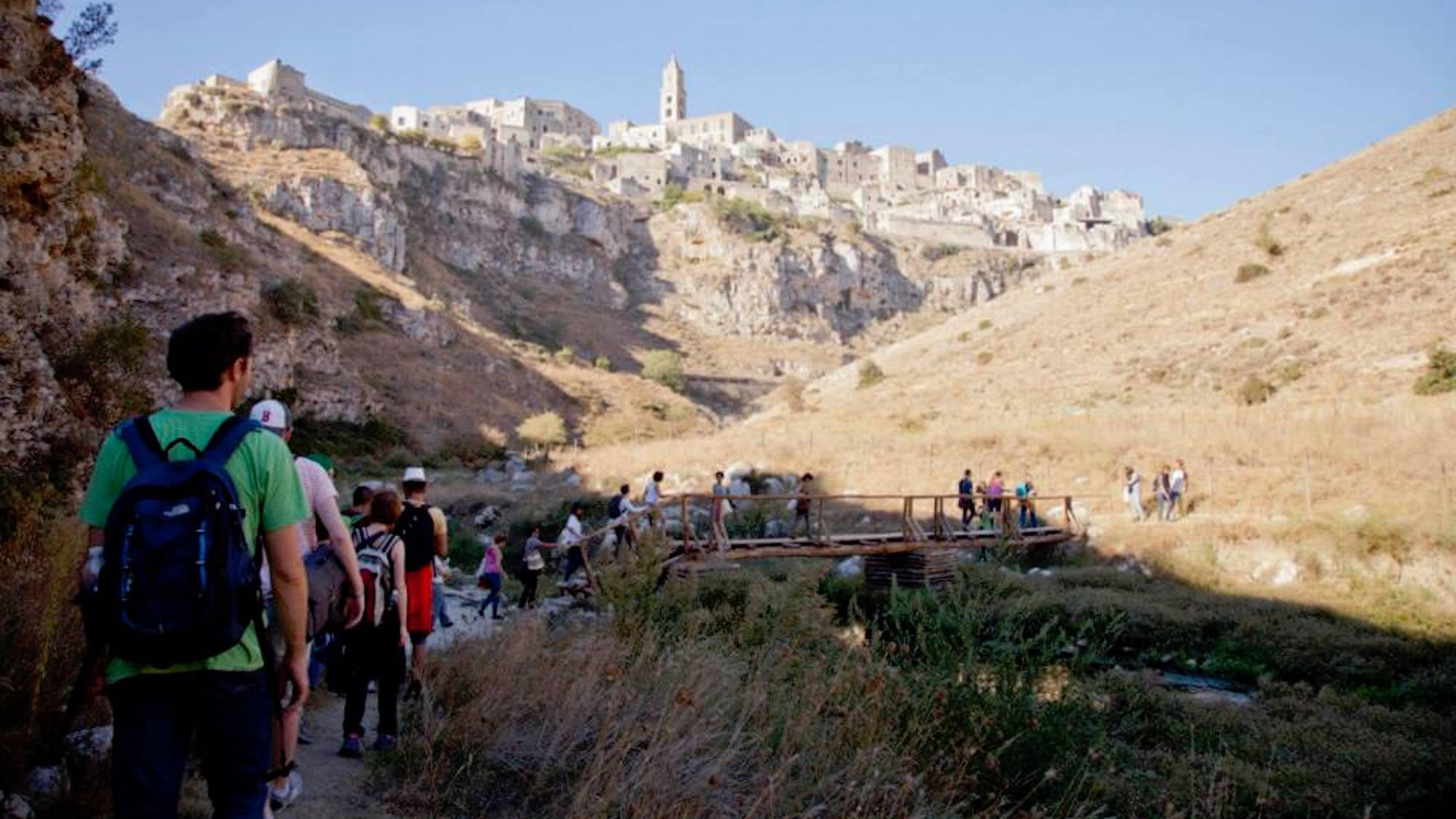 partners
partners
Interview with Trevor Davies
Jean-Sebastien Steil & Ariane Bieou
01/04/2012
© Jacob Langaa Sennek - © Jacob Langaa Sennek
Licensed city planner Trevor Davies is the director of the Metropolis biennale of art in the public space, organized by Københavns Internationale Teater in Copenhagen. He is also the head of the application committee for the city of Åarhus in the run to host the European Capital of Culture program in 2017.
Davies talks about art and play as instruments of social engineering and urban ecology. From flash mobs to more elaborate artistic performances, playful happenings in the city innocently engage the fundamentals of society and politics.
Jean-Sébastien Steil - For about 15 years, we’ve noticed the development of many kinds of artistic interventions in the public space that are connected to the question of playing with the city. Lots of projects are based on the collective participation, like flash mobs, spontaneous mobilization of volunteers that come through social networks to dance together. Many other artistic projects propose game rules to an audience, which is invited to participate in scenarios as if it was a game. How do you analyze this phenomenon?
Trevor Davies - I think there’s an attempting to merge the territory between the virtual space and the physical space. That’s been introduced by the development since 15 years of various kinds of Internet interfaces. But one’s ideas are now translated from Internet interfaces into the urban space. The way we work with physical realities also translates into the way we cope with digital realities. It is a sign of perhaps a playfulness rather than a serious protest again the urban condition. Artists went through a phase in the nineties where their manifestations in the urban space were about apocalyptic and very negative ideas: the way cities were threatening social lives, individuality. There’s now a need or a wish to explore the positive and the potential of micro-spaces. They aren’t so much social, political issues, but micro-possibilities in creating micro-environments which both linked and independent have nothing to do with the formal notion of a city, nor with formal decisions about how environments, traffic or noise are regulated, but have to do with another way of considering that.
It’s also a question of new social mobilization. There is a search for another kind of movement: artists working on dramaturgy, staging or choreography in a different way. Working with these notions allows creating mass movements, interaction and formations, by notation methods, which are somehow easily understoodand accepted. So it’s a way of trying to find an answer to the fact that people don’t belong to any group, work alone, but want to empower themselves to be creative.

Jean-Sebastien Steil - How do these artistic games constitute a negotiation of collective place in the public space and how does it contribute to the evolution of the city?
Trevor Davis - It’s always interesting to see what kind of actions are made, what kind of places are chosen because it’s always about a cry for a need. If one can create a receptive understanding of that, the trouble is that it will be received as be-ing only playful. Can it go beyond? How can this influence our decisions, our designs, our city? That’s always really a problem because artists have always activated the city and done events and projects, but how can these be used? They are autonomous in the city, they aren’t commissioned, they just take place.To me, it’s far more important to look at the role of protests. It is good to have points of friction, points of things which aren’t accepted, and not legalized, and you don’t apply for. If we say: “Here you can have your skater” or “here you can do your flash mobs”, it negates the whole point. So I think that an artist then will move to another place or to another time. I think it’s actually quite healthy and important.
Jean-Sebastien Steil - Many artists do re-appropriate these volunteer proposals by staging them, mapping the city with cellphones, crossing the city blind, or replaying a historical football game with the audience. Do you think that the artists are fore-front of these social phenomena, or that they are the engines of something that will go further?
Trevor Davis - I think they’re often at the edge. They are finding new ways, new methods. This is happening all the time in art history: things are happening in the social sphere and then become lifted into high art or translated into a formalistic artwork. That is perhaps one of the advantages because, again, defining something as an artistic work within a cultural sphere, allows to be far more controversial, radical and provocative. In that way, artists are able to explore phenomenons and understand the psycho-geography of spaces and communities far quicker and more precisely than any formal methodology. I think they should be allowed to do this. And we are in a time where artists are trying to reunite and reconnect with society. There are lots of reasons why that is happening.This is partly media-driven but also partly driven by the lack of morality, and the lack of morals and of authority, and also perhaps the lack of the belief in the future. The constant crises we’ve had the last ten years – climate cri-sis, economic crisis –, have actually made that the artists have no need anymore to distance themselves from society. They have a need of reengaging in it. It’s perhaps the major trend of artists in this time.
In this way, the artists have incredible possibilities, far more than before because their field is not limited and they become able to act out their role in a real context and create real situations. At the same time, they have then the responsibility of having to understand this reality and be able to translate it somehow. This is a new kind of political and social role.

Jean-Sebastien Steil - Artists are also playing with the senses. When they propose to the audience to cross the city blind, it’s to open to other sensibilities. Why do we transform the perception, what does it produce as common or individual representations?
Trevor Davis - I think certain might say that it’s a resocialiation of the city, a way to understand the city as the city of everybody. It also extends our understanding of how the city is interpreted and how we occupy it. This sense of getting other viewpoints and other sensitive approaches is fundamental, just by breaking people’s mono-tone way of acting. It’s breaking down the way we try to construct very narrow realities about what life is or what cities are. Escaping that is important. Living the city blind means, in a way, give yourself up to the city. It means that you become part of something which is far bigger. You become somebody who is actually not in control of his or her own life or destiny, but actually part of. I think this is also quite an im-portant thing; this realization is still about the question of the individual and the masses.
Jean-Sebastien Steil - You’re the General Manager of the application of Århus (Denmark) for the Euro-pean Capital of Culture 2017. Lieux publics, in Marseilles, is preparing «Metamorphoses, the artists play with the city» for the European Capital of Culture Marseilles-Provence 2013. For you, what’s the place and what’s the
role of games in your program and in general for this kind of event?
Trevor Davis - I don’t know if it’s games but this project is trying to create change, to take a risk. By doing that, you need to create a secure environment, so that people are not afraid of falling off. So one of the things we can do is create this sense of that it is a game, and that we’re playing a game. When you make festivals for three days or five days and you have 25.000 people together in one space, you can create another sense of reality and of norms where people will react differently. You suspend their sense of normality. And to do so you take them to a different state of abnormality or unreality in which they’re willing and able, without fear, to actually do something which they would never do before: go to see other performances, read other things, take a discussion about whatever. So that is a sense of freedom. If you can do it in a city for a whole year, in theory, you create an almost magical situation where you can really create a permanent change.
At a point, perhaps you’ve prepared people to make decisions which are really radical for their lives and for the city. The challenge is to create that framework. There are rules, there are regulations, there are ways of being a player, there are certain moves you can make and not make, there are certain consequences of doing some things, and certain tasks, and there are certain relationships. If you can make a dramaturgy, and build your program like that, then you can re-ally make something which is transformational. You can transform from potential to experiential and make quite clear changes in people’s perception and understanding of things. If you can do that, it’d be absolutely wonderful.
 Invisible Playground - Field Office Budapest
Invisible Playground - Field Office Budapest
Ariane Bieou - Are you enjoying this game?
Trevor Davis - Yes, but there’s trouble with these kinds of games. And this is probably why gaming on this level is individual, secretive, private. If you try to make it into a system, it may collapse completely and become very authoritarian and also very suspect or elitist. It may be just a construction, a constructural exercise. It’s not big games but it has something to do with my basic idea of “cultural acupuncture” in which you know exactly where to touch and activate systems.
Ariane Bieou - How will you programme in Århus for the European Capital of Culture and for the Metropolis festival in Copenhagen, with what «rules»?
Trevor Davis - It’s a game in the way that we are going to commission like 12 major productions in the year which link chosen spaces with chosen themes with chosen aesthetics and chosen values. In a way, it is a dramaturgy with a number of scenes and scenarios worked out. It’s giving a role to the artists within a metastructure. It’s more like a dramaturgy in roles rather than games. The idea of actually using the whole gaming methodology, actually could be quite interesting.
One project which we had presented in Copenhagen for Metropolis and which we’re hoping to be able to work on a lot more, is a project called Riders Spoke. It’s a game made by a British company called Blast Theory. They come from Birmingham and they work a lot with new media. It’s a project with 20-30 bicycles. You take a bike, and then you have headphones and the map of the city on the front, and then all of a sudden a voice says: “Look at the building on the left, go to the door.” And then: “Do you recognize the door? Does this door say anything to you?” And you press “yes” or “no”. And then: “Do you see anything you remember from your childhood?” And you say: “A bench.” “Well, go to the bench.” And then you sit. “At this bench we have a series of stories, do you want to hear some of the stories?” So these stories have been dropped. “Do you have a story yourself about a bench?” And you plop down on the bench and tell the story that is recorded. And so, over three weeks, 600 stories were led on this area...
Ariane Bieou - Stories of the people participating?
Trevor Davis - Yes, but now we’re trying to invite them in an area of blocks of slums. We would like them to put their common stories in fictive names in the public space. We could use that to understand the tensions, the possibilities and the networks: how people think about their place and what they would like to be changed, and what they think the problems are. This way is a very clear way of using a game, translating it into a real-life situation. The question then is: do you have the right to use that and should they know that this is just not a game, but it is also an exercise in social engineering?Another question: where does the artists’ do-main end, and where does the town planner, architect’s search begin? Artists do need competencies which are more than just artistic. But I think it’d be fantastic to have artists who are working with architects or sociologists or whatever, but still driven by an artistic vision. Those forms of intervention and collaboration are used to communicate a very precise mes-sage and to instantly provide a calm answer to defuse any situation outside of media coverage. We are coming back to the concept of “cultural acupuncture”.
 Urban Games Factory - Basillicata Border Games © UGF
Urban Games Factory - Basillicata Border Games © UGF